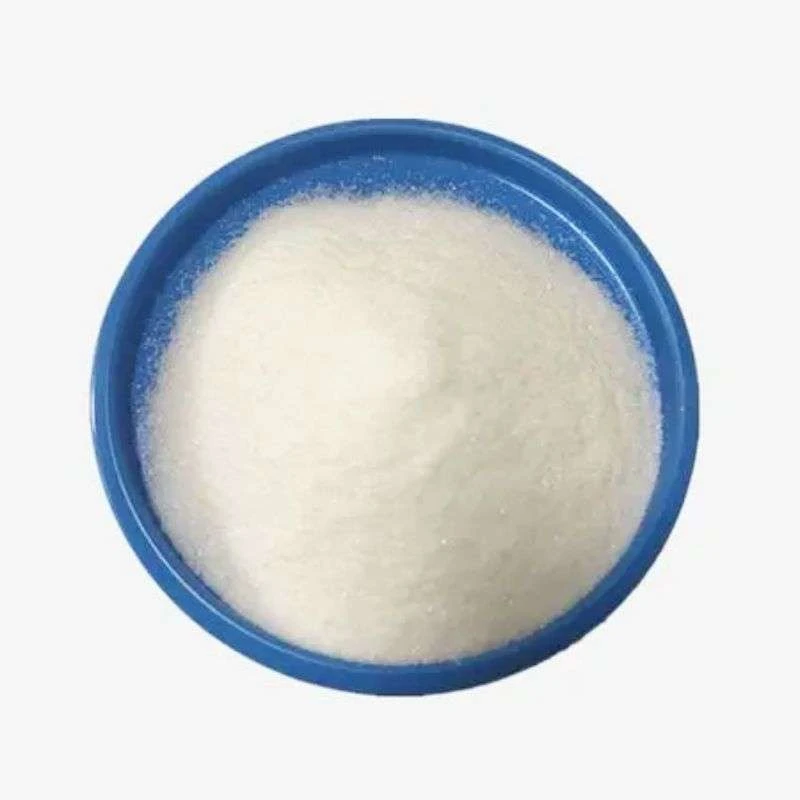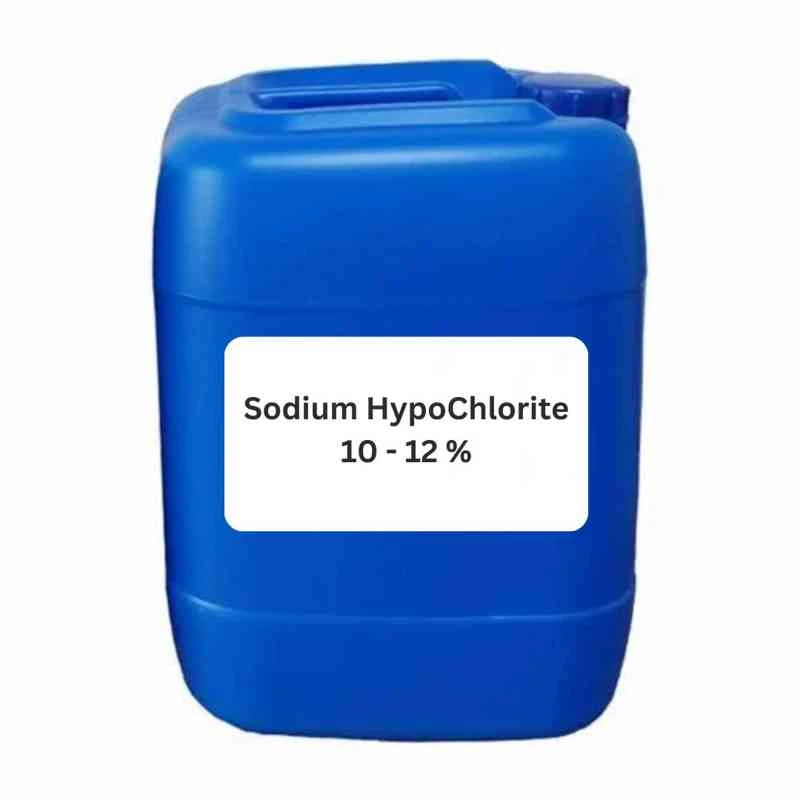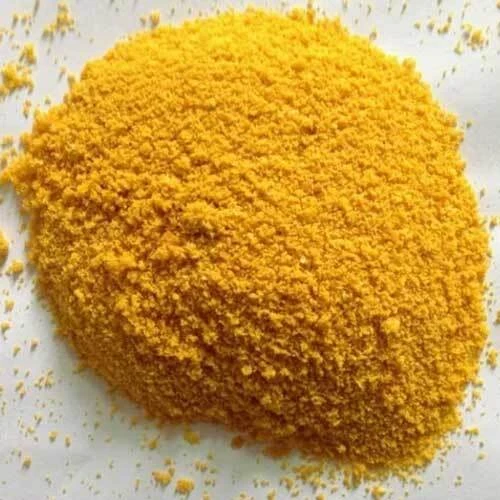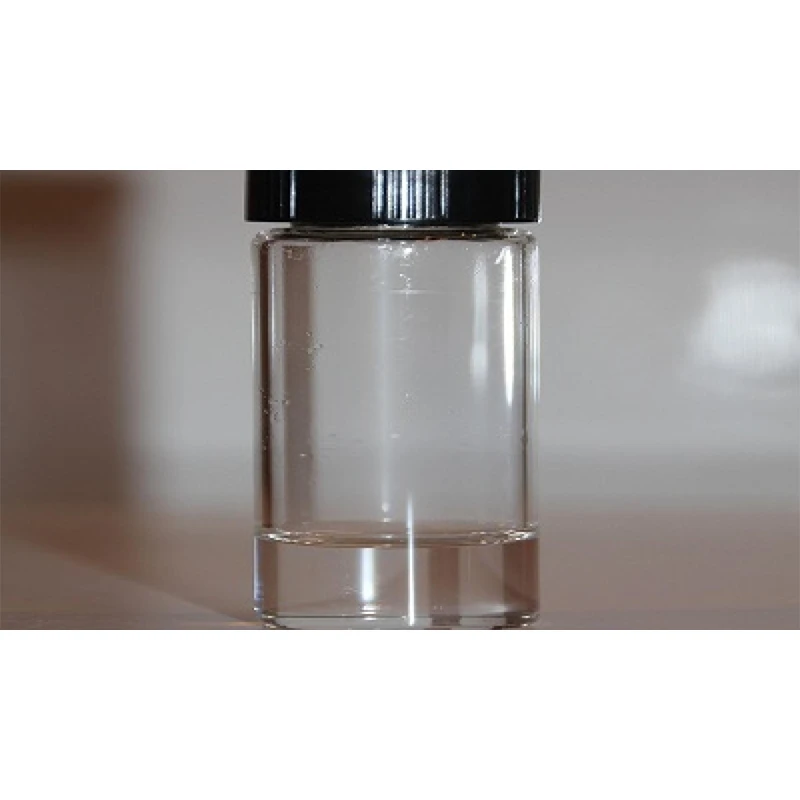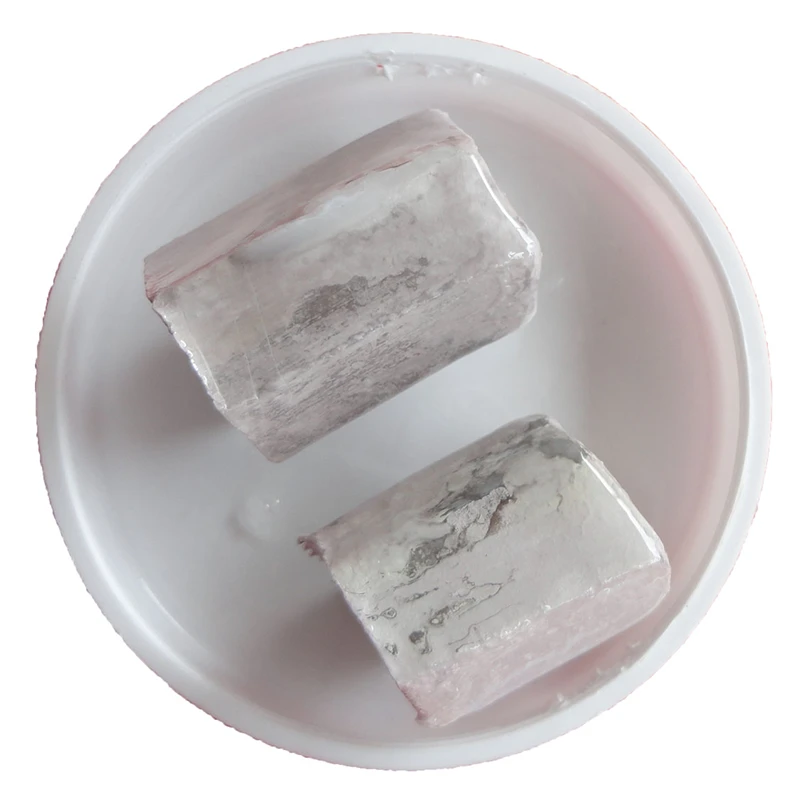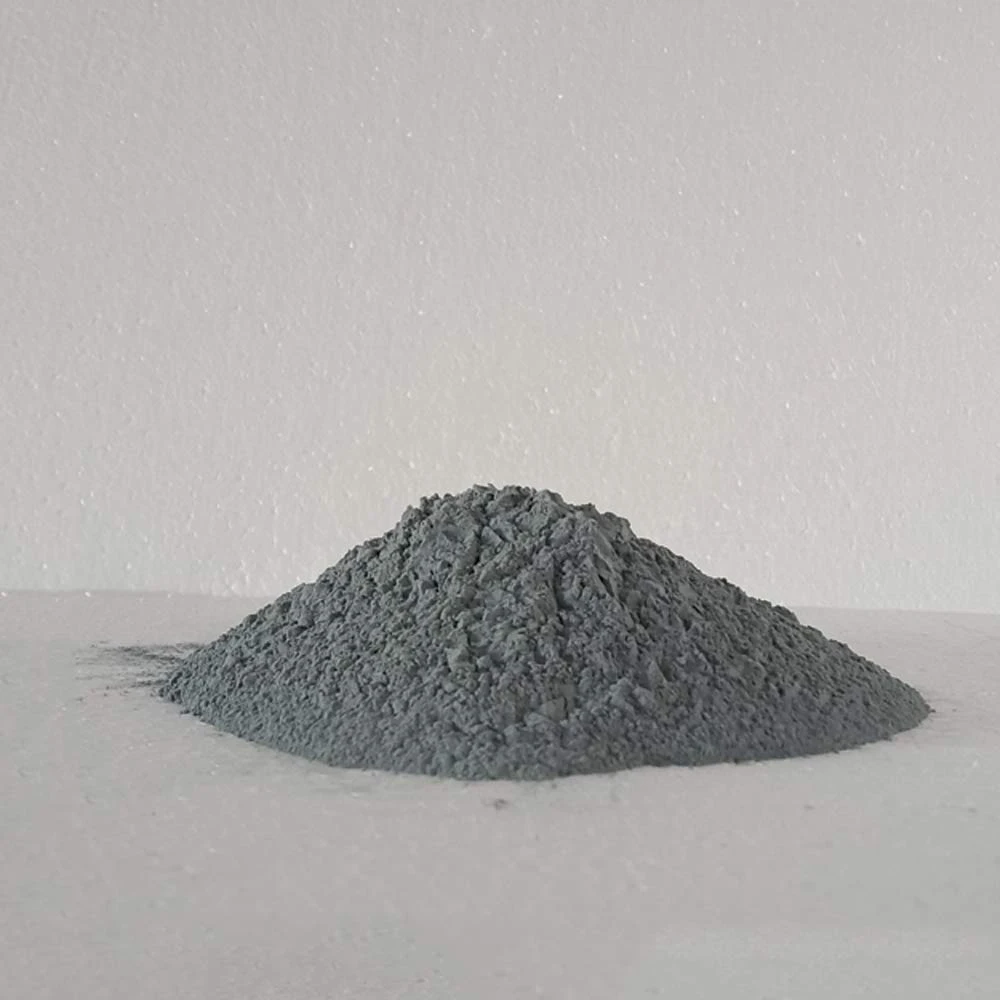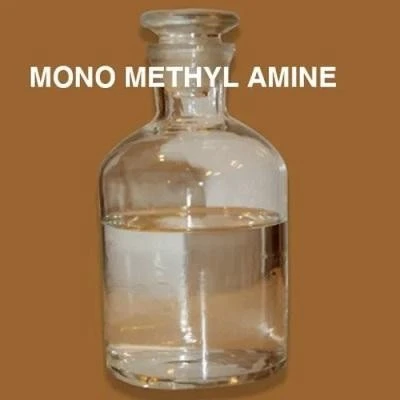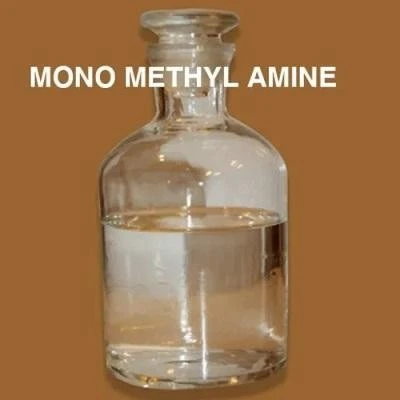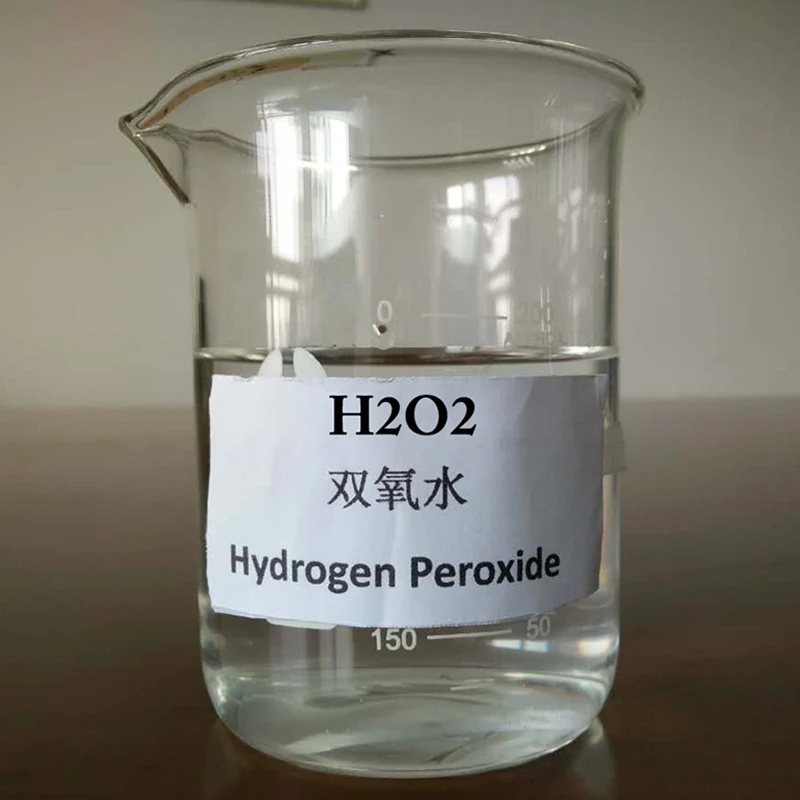


Azoxystrobin Fungicide Solutions | Azoxy Crop Protection
The Cornerstone of Modern Agriculture: Understanding Azoxystrobin
In the dynamic landscape of global agriculture, safeguarding crop health against devastating fungal diseases is paramount to ensuring food security and economic stability. Among the myriad of solutions available, azoxystrobin stands out as a preeminent fungicide, revered for its broad-spectrum efficacy and plant health benefits. This strobilurin-based active ingredient has revolutionized disease management strategies across a vast array of crops, providing robust protection against a wide spectrum of plant pathogens. Our comprehensive exploration delves into the scientific intricacies, manufacturing excellence, application versatility, and strategic advantages that position Azoxystrobin as a critical component for sustainable and profitable agricultural practices. Understanding the sophisticated chemistry and meticulous production of this powerful azoxystrobin fungicide is essential for agricultural professionals, distributors, and formulators seeking to optimize crop yields and quality.
The demand for high-quality fungicides like azoxystrobin continues to surge, driven by increasing agricultural intensification, climate change impacts on disease patterns, and the need for greater efficiency in crop protection. This detailed guide aims to provide a deep dive into Azoxystrobin, addressing its technical specifications, manufacturing processes, diverse applications, and the strategic advantages it offers over conventional treatments. We will also touch upon the nuances of its formulations, such as azoxystrobin 2sc, and how these impact its efficacy and user convenience in various agricultural settings. Our commitment to providing authoritative insights and transparent information underscores the trustworthiness vital for B2B partnerships in this critical sector.
The Scientific Prowess of Azoxystrobin: A Deep Dive into its Mechanism and Properties
At the heart of azoxystrobin's exceptional performance lies its unique mode of action. Classified as a Quinone outside Inhibitor (QoI) fungicide, it belongs to the strobilurin chemical class. This group of fungicides derives its name and inspiration from naturally occurring antifungal compounds produced by fungi, specifically the mushroom Strobilurus tenacellus. The synthetic replication and enhancement of these natural compounds have led to the development of highly effective and widely adopted agrochemicals. The primary mechanism of action for azoxystrobin involves disrupting the energy production in fungal cells.
Specifically, azoxystrobin inhibits mitochondrial respiration by blocking electron transport at the Qo site of the cytochrome bc1 complex (Complex III). This vital cellular process is responsible for adenosine triphosphate (ATP) synthesis, the energy currency of the cell. By interrupting this pathway, azoxystrobin effectively starves the fungal pathogen of energy, thereby preventing spore germination, mycelial growth, and sporulation. This systemic and translaminar activity ensures that the active ingredient is absorbed by the plant and moves throughout its tissues, providing both protective and curative action against invading fungi. This dual action is crucial for comprehensive disease management, allowing for flexibility in application timing.
Key Technical Parameters of Azoxystrobin
Understanding the inherent properties of azoxystrobin is crucial for its effective formulation and application. The following table outlines key technical parameters that define its chemical and physical characteristics, providing insight into its stability, solubility, and overall behavior. These specifications are critical for quality assurance and compliance with international standards, ensuring that the delivered product meets the highest efficacy and safety benchmarks.
| Parameter | Specification |
|---|---|
| CAS Number | 131860-33-8 |
| Chemical Name | methyl (E)-2-{2-[6-(2-cyanophenoxy)pyrimidin-4-yloxy]phenyl}-3-methoxyacrylate |
| Molecular Formula | C22H17N3O5 |
| Molecular Weight | 403.39 g/mol |
| Appearance | White to off-white crystalline solid |
| Melting Point | 117-119 °C |
| Vapor Pressure (25°C) | 1.1 x 10-7 Pa |
| Solubility in Water (20°C) | 6.7 mg/L |
| Solubility in Organic Solvents | High in acetone, dichloromethane, toluene |
| Partition Coefficient (log Pow) | 2.5 |
| Stability | Stable to hydrolysis at pH 5-9; thermally stable up to 300°C |
The detailed understanding of these parameters allows for precise formulation and application strategies, ensuring optimal performance of azoxy fungicide under various environmental conditions. Its relatively low water solubility and moderate octanol-water partition coefficient indicate good persistence on leaf surfaces and limited leaching, which are desirable properties for an effective crop protection chemical.
The Meticulous Manufacturing Process of Azoxystrobin
The production of high-purity azoxystrobin is a testament to advanced chemical engineering and rigorous quality control. It involves a multi-step organic synthesis process, beginning with carefully selected raw materials and progressing through a series of complex reactions, purifications, and finishing steps. This intricate manufacturing pathway ensures the consistency, purity, and efficacy of the final active ingredient. The primary raw materials typically include 2-cyanophenol, 2-methoxyphenylacetic acid derivatives, and pyrimidine precursors, among others, each sourced from reputable suppliers to ensure initial quality.
Key Stages of Azoxystrobin Synthesis:
- Esterification and Cyclization: The process typically commences with the esterification of an appropriate alcohol with a carboxylic acid derivative, followed by cyclization reactions. These initial steps establish the core molecular framework, creating intermediate compounds with specific functionalities required for subsequent reactions. Precision control of temperature, pressure, and catalyst selection is paramount during these exothermic reactions to maximize yield and minimize impurities.
- Coupling Reactions: Subsequent stages involve critical coupling reactions, often employing advanced catalytic systems, to link different molecular fragments. For azoxystrobin, this includes the formation of the pyrimidine ring and its attachment to the phenoxy and phenylacrylate moieties. Suzuki-Miyaura coupling or similar cross-coupling reactions might be utilized for carbon-carbon bond formation, while nucleophilic aromatic substitution plays a key role in incorporating the cyanophenoxy group onto the pyrimidine ring. Each coupling reaction is optimized for selectivity and conversion rate.
- Purification and Isolation: After the main synthesis, the crude product contains various by-products and unreacted starting materials. Extensive purification steps are then undertaken to achieve the required purity level. These processes often involve a combination of techniques such as extraction, recrystallization, distillation, and chromatography. For example, hot solvent dissolution followed by controlled cooling to induce crystallization is a common method for separating the desired azoxystrobin active ingredient from soluble impurities. Multiple washes with specific solvents help to remove residual contaminants.
- Drying and Milling: The purified wet cake of azoxystrobin is then subjected to carefully controlled drying processes, typically in vacuum dryers or fluid bed dryers, to remove residual solvents and moisture. This step is crucial to ensure product stability and prevent degradation. Following drying, the material may be milled to a specific particle size distribution, which is vital for subsequent formulation steps, particularly for suspension concentrates (azoxystrobin 2sc) and wettable powders. The milling process uses specialized equipment to achieve uniform particle size without compromising chemical integrity.
Throughout the entire manufacturing journey, stringent quality control (QC) measures are implemented at every stage. In-process controls (IPCs) monitor reaction progress, impurity levels, and physical parameters to ensure that each batch adheres to strict specifications. For the final product, advanced analytical techniques such as High-Performance Liquid Chromatography (HPLC), Gas Chromatography (GC), Mass Spectrometry (MS), and Nuclear Magnetic Resonance (NMR) spectroscopy are employed to verify the chemical identity, assay purity, and quantify any trace impurities.
Our manufacturing facilities adhere to international standards such as ISO 9001 for quality management systems, ensuring a consistent and reliable supply of high-grade azoxystrobin fungicide. Compliance with Good Laboratory Practice (GLP) principles in our analytical labs further validates the accuracy and reliability of all testing data. The typical service life of Azoxystrobin refers not to the chemical itself, but its shelf-life stability and the duration of its protective action on plants after application, which is a key advantage for growers.

Formulations and Enhanced Performance: Focus on Azoxystrobin 2SC
While the pure active ingredient azoxystrobin is crucial, its efficacy in the field is largely dependent on its formulation. Different formulations are designed to optimize handling, application, and bioavailability of the active ingredient, ensuring maximum disease control. Among the most widely used and effective formulations is the Suspension Concentrate (SC), particularly azoxystrobin 2sc.
Understanding Azoxystrobin 2SC:
The "2SC" designation signifies a suspension concentrate containing 2 pounds of active ingredient (AI) per US gallon. In metric terms, this often translates to concentrations around 250 g/L (grams per liter) or 25% w/w. This formulation consists of finely ground particles of azoxystrobin active ingredient dispersed in water, along with various dispersing agents, wetting agents, anti-settling agents, and anti-foaming agents. The goal is to create a stable, flowable liquid that mixes easily with water for spray applications, providing uniform coverage and absorption by the plant.
Advantages of SC Formulations (e.g., azoxystrobin 2sc):
- Ease of Handling: Liquid formulations are generally easier to measure and pour compared to solid forms, reducing dust exposure and improving user safety.
- Excellent Suspensibility: The finely dispersed particles remain suspended in the spray tank, ensuring uniform application and preventing clogging of spray nozzles. This is crucial for consistent disease control across the entire treated area.
- Improved Bioavailability: The small particle size of azoxystrobin in SC formulations enhances its adhesion to plant surfaces and facilitates its uptake into plant tissues, leading to superior systemic and translaminar activity.
- Reduced Environmental Impact: Being water-based, SC formulations eliminate the need for organic solvents, which can be advantageous from an environmental and safety perspective.
- Compatibility: SC formulations often exhibit good compatibility with other agrochemicals, allowing for tank-mixing to provide broad-spectrum control or address multiple pest issues simultaneously.
Technical Specifications for Azoxystrobin 2SC (Typical):
| Parameter | Typical Range / Value |
|---|---|
| Active Ingredient Content | 23-25% w/w (or 250 g/L) |
| Appearance | Off-white to light beige liquid suspension |
| pH (1% aqueous solution) | 6.0 - 8.0 |
| Specific Gravity (20°C) | 1.10 - 1.20 g/mL |
| Viscosity (20°C, Brookfield) | 50 - 300 cP (depends on specific formulation) |
| Particle Size (D90) | < 5 micrometers |
| Persistent Foam (mL) | < 20 mL after 1 minute |
| Suspendibility (25°C, 30 min) | > 90% |
| Storage Stability | Stable for 2 years minimum under recommended conditions |
These specifications highlight the careful engineering behind azoxystrobin 2sc, ensuring its performance reliability from manufacturing to field application. The fine particle size is particularly important for maximizing the surface area of contact with fungal spores and mycelia, leading to more efficient disease eradication and prevention. This attention to detail is what defines a high-quality azoxystrobin fungicide product.
Broad-Spectrum Applications and Industry-Specific Advantages of Azoxystrobin
The versatility of azoxystrobin in combating a vast range of plant diseases makes it indispensable across numerous agricultural and horticultural sectors. Its broad-spectrum activity means it is effective against all four major classes of plant pathogenic fungi: Ascomycetes, Basidiomycetes, Deuteromycetes (Fungi Imperfecti), and Oomycetes. This comprehensive efficacy makes azoxystrobin a foundational element in integrated pest management (IPM) programs worldwide.
Key Applicable Industries and Crop Segments:
- Cereal Crops: Wheat, Barley, Rice, Corn. Azoxystrobin is highly effective against major diseases like powdery mildew (Blumeria graminis), rusts (Puccinia spp.), Septoria leaf blotch (Zymoseptoria tritici), and net blotch (Pyrenophora teres). Application of azoxystrobin fungicide in cereals not only controls diseases but also confers physiological benefits, known as "greening effect," leading to improved photosynthesis, delayed senescence, and ultimately higher yields and grain quality.
- Fruits and Vines: Grapes, Apples, Pears, Citrus, Berries. For grapes, it targets downy mildew (Plasmopara viticola), powdery mildew (Uncinula necator), and black rot (Guignardia bidwellii). In apples, it controls scab (Venturia inaequalis) and powdery mildew (Podosphaera leucotricha). The exceptional efficacy of azoxy fungicide helps secure fruit quality and shelf life.
- Vegetables: Potatoes, Tomatoes, Cucurbits, Leafy Greens. It offers critical control for late blight (Phytophthora infestans) and early blight (Alternaria solani) in potatoes and tomatoes, downy mildew in cucurbits, and powdery mildew in various vegetable crops. This broad coverage reduces reliance on multiple, specialized fungicides.
- Specialty Crops and Ornamentals: Turfgrass, Flowers, Trees. Used extensively in turf management for diseases like brown patch, Pythium blight, and dollar spot. In nurseries and greenhouses, azoxystrobin protects ornamental plants from various foliar and root diseases, ensuring aesthetic appeal and plant health for commercial markets.
Product Advantages in Typical Application Scenarios:
- Superior Efficacy and Yield Enhancement: Azoxystrobin delivers outstanding disease control, often leading to significant yield increases. For instance, studies have shown yield improvements of 10-20% in cereal crops when azoxy is applied effectively, due to both direct disease control and physiological benefits.
- Translaminar and Systemic Movement: Once applied, azoxystrobin moves through the leaf surface to the other side (translaminar) and is absorbed by the plant to be transported systemically. This protects new growth and areas not directly covered by the spray, providing more robust and lasting protection.
- Long-lasting Residual Activity: Its strong binding to the plant surface and slow degradation ensures prolonged protective action, reducing the need for frequent applications and thus saving labor and operational costs. This can extend protection up to 14-21 days depending on environmental conditions.
- Resistance Management Tool: As a QoI fungicide, azoxystrobin is a critical component in fungicide rotation programs. Implementing effective anti-resistance strategies, such as alternating with fungicides from different modes of action (e.g., DMI, SDHI), is crucial to preserve its long-term effectiveness and prevent the development of resistant fungal populations.
- Enhanced Crop Quality: Beyond disease control, azoxystrobin contributes to healthier plants, leading to improved aesthetic quality, larger fruit size, and better post-harvest shelf life for various crops. This "plant health" effect is a significant added value for growers targeting premium markets.

The holistic benefits derived from using azoxystrobin extend beyond mere disease suppression, encompassing significant improvements in overall crop vigor and economic returns for growers. Its integration into modern farming practices exemplifies a commitment to sustainable and high-yielding agriculture.
Navigating the Competitive Landscape: Choosing the Right Azoxystrobin Partner
The global market for fungicides is highly competitive, with numerous manufacturers offering azoxystrobin and its formulations. For B2B buyers, selecting the right supplier is not merely about price; it's about securing a consistent supply of high-quality product, coupled with reliable technical support and stringent regulatory compliance. A thorough vendor assessment focuses on several key criteria that differentiate leading manufacturers.
Key Considerations for Manufacturer Comparison:
- Purity and Consistency: The active ingredient purity (typically ≥95% for technical grade azoxystrobin) and the consistency of batch-to-batch production are paramount. Impurities, even in trace amounts, can affect efficacy, stability, and regulatory compliance. Reputable manufacturers invest heavily in advanced analytical chemistry to guarantee purity.
- Formulation Expertise: Beyond the active ingredient, the quality of the formulated product, such as azoxystrobin 2sc, significantly impacts field performance. Leading manufacturers possess extensive R&D capabilities in formulation science, ensuring optimal particle size, suspensibility, and shelf stability.
- Regulatory Compliance and Certifications: Adherence to international regulatory standards (e.g., FAO specifications, EPA, EU regulations) and possession of certifications like ISO 9001 (Quality Management), ISO 14001 (Environmental Management), and GLP (Good Laboratory Practice) are non-negotiable indicators of a manufacturer's commitment to quality and safety. Our certifications serve as a testament to our unwavering dedication to these global benchmarks.
- Supply Chain Robustness: A reliable supplier can guarantee consistent availability and timely delivery, crucial for seasonal agricultural cycles. This includes strong raw material sourcing, efficient production capacity, and effective logistics management. Our service experience spans over two decades, signifying proven supply chain resilience.
- Technical Support and R&D: Access to expert technical advice on product application, compatibility, and resistance management strategies is invaluable. Manufacturers who invest in ongoing R&D are better positioned to provide innovative solutions and adapt to evolving market needs.
- Post-Sales Service and Warranty: A commitment to customer satisfaction through comprehensive post-sales support, clear warranty policies, and responsive issue resolution builds long-term trust and partnership.
Comparison: Azoxystrobin vs. Other Fungicide Classes
While azoxystrobin is a powerful tool, it's often used in conjunction with or as an alternative to other fungicide classes. Here's a brief comparison to highlight its unique advantages:
| Feature | Azoxystrobin (QoI) | Triazoles (DMI) | SDHIs (SDHI) | Chlorothalonil (Multi-site) |
|---|---|---|---|---|
| Mode of Action | Mitochondrial Respiration Inhibitor (QoI) | Sterol Biosynthesis Inhibitor (DMI) | Succinate Dehydrogenase Inhibitor (SDHI) | Multi-site inhibition |
| Spectrum | Broad (Ascomycetes, Basidiomycetes, Deuteromycetes, Oomycetes) | Broad (Ascomycetes, Basidiomycetes, some Deuteromycetes) | Broad (Ascomycetes, Basidiomycetes) | Broad (primarily Ascomycetes, Deuteromycetes) |
| Systemicity | Systemic & Translaminar | Systemic | Systemic & Translaminar | Contact Only |
| Residual Activity | Excellent (14-21 days) | Good (10-14 days) | Excellent (14-21 days) | Moderate (7-10 days) |
| "Greening Effect" / Plant Health | Pronounced | Minimal | Moderate | None |
| Resistance Risk | Moderate to High (single-site MOA) | Moderate (single-site MOA) | Moderate to High (single-site MOA) | Low (multi-site MOA) |
This comparison highlights why azoxystrobin is often a preferred choice for its broad spectrum and plant health benefits, despite its single-site mode of action necessitating careful resistance management. Companies, like DFC Hempest, with a deep understanding of these nuances, offer superior value through both product quality and strategic guidance.
Tailored Solutions and Proven Success: Customized Azoxystrobin Offerings
Recognizing that every agricultural challenge is unique, leading manufacturers of azoxystrobin provide not just a product, but a partnership approach, offering customized solutions that align with specific regional, crop-specific, and operational requirements. This includes flexibility in formulation, concentration, packaging, and integrated pest management strategies. Our commitment extends to delivering bespoke azoxy solutions designed to maximize your efficiency and success.
Customized Formulation and Concentration:
While azoxystrobin 2sc is a standard, we understand that different markets or application methods may benefit from varying concentrations or even alternative formulations (e.g., Water Dispersible Granules (WDG), Wettable Powders (WP), or combined formulations with other active ingredients for broader spectrum control). We offer the capability to tailor the concentration of azoxystrobin to meet precise specifications, optimizing dosage rates and ensuring cost-effectiveness for our clients. This flexibility is crucial for distributors serving diverse agricultural regions with varying regulatory environments and farming practices.
For example, in regions requiring lower active ingredient loads per application, a custom-formulated azoxy product with adjusted concentration can be developed. Conversely, for highly concentrated solutions, our technical team can advise on optimal surfactant packages and stabilizer systems to maintain product stability and dispersibility. This collaborative approach ensures that the final product seamlessly integrates into existing farming systems.
Integrated Technical Support and Application Guidance:
Our expertise goes beyond manufacturing. We provide comprehensive technical support, offering guidance on optimal application timing, dosage rates, spray volume, and tank-mix compatibility for azoxystrobin fungicide. This includes advising on resistance management strategies, such as rotation with other MOAs, to ensure the longevity and efficacy of azoxystrobin. Our agronomists and technical specialists are available to consult on specific crop protection challenges, helping clients develop robust disease control programs tailored to their environmental conditions and crop cycles.
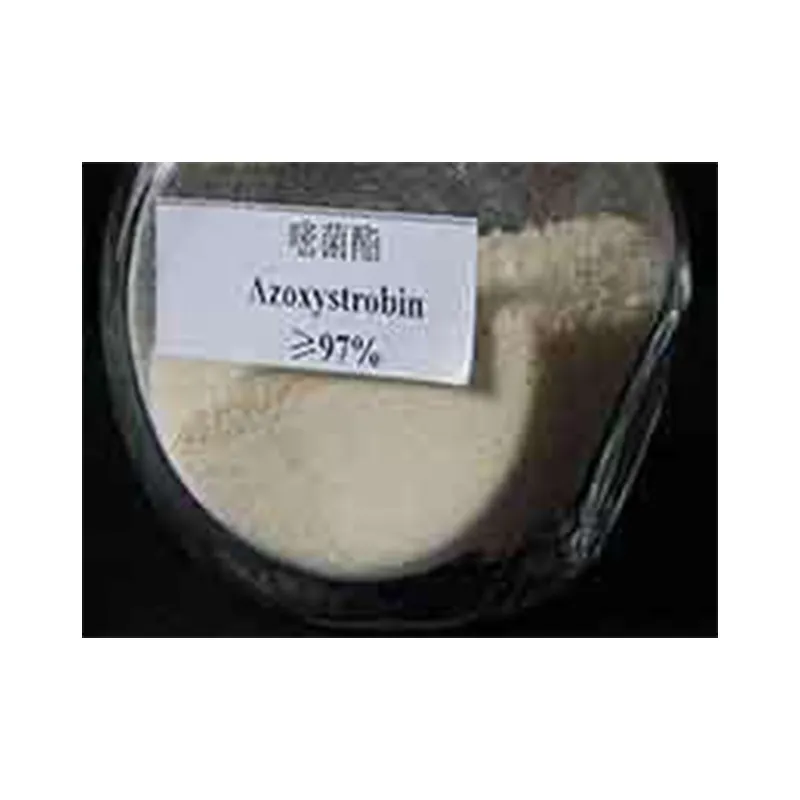
Application Case Studies and Customer Feedback:
Our success is mirrored in the success of our clients. Here are illustrative examples of how our azoxystrobin solutions have delivered tangible benefits:
-
Case Study 1: Enhanced Wheat Yields in European Farm Belt
A large-scale agricultural cooperative in Eastern Europe faced severe outbreaks of Septoria leaf blotch (Zymoseptoria tritici) and powdery mildew in their winter wheat crops, leading to significant yield losses in previous seasons. Implementing a comprehensive spray program featuring our azoxystrobin 2sc, applied at key growth stages (T1 and T2), resulted in a documented 18% increase in grain yield compared to control plots, alongside a notable improvement in grain protein content. Farmers reported healthier, greener flag leaves, sustaining photosynthetic activity longer into the grain-filling period, which directly contributed to the yield boost. This success was achieved through rigorous field trials and close collaboration with our technical team on application timing. -
Case Study 2: Superior Grapevine Disease Control in Mediterranean Vineyards
A renowned vineyard in the Mediterranean region struggled with persistent outbreaks of downy mildew (Plasmopara viticola) and powdery mildew (Erysiphe necator), particularly challenging in humid microclimates. Following a tailored application schedule using our azoxy fungicide, the vineyard achieved near-complete disease suppression throughout critical growth stages. Post-harvest analysis revealed significantly reduced disease incidence on both leaves and grape clusters, leading to a 25% reduction in culls due to disease and an overall enhancement in wine quality attributes. The systemic nature of the product ensured protection even on difficult-to-reach parts of the dense canopy. - Client Testimonial: "Switching to DFC Hempest's azoxystrobin has been a game-changer for our potato yields. We've seen unmatched control of early and late blight, even under challenging weather conditions. The product consistency and the technical support provided are simply outstanding." - Head Agronomist, Midwest Farms Inc.
These examples underscore our commitment to not just supplying a chemical, but partnering with our clients to achieve sustainable agricultural success through tailored solutions and proven efficacy of azoxystrobin. Our extensive field data and client feedback consistently demonstrate the superior performance and economic value our products deliver.
Quality Assurance, Trust, and End-to-End Customer Support
In the highly regulated agrochemical industry, trustworthiness is built on unwavering commitment to quality, transparent practices, and comprehensive customer support. For a critical active ingredient like azoxystrobin, these elements are not just differentiators but essential pillars of a reliable partnership. Our operational ethos is deeply rooted in establishing and maintaining the highest standards across all facets of our business.
Rigorous Quality Control and Certifications:
Every batch of azoxystrobin, from technical material to formulated products like azoxystrobin 2sc, undergoes a stringent multi-point quality control regimen. This begins with the meticulous selection and testing of raw materials, ensuring they meet purity and consistency requirements before entering the synthesis process. Throughout the manufacturing stages, in-process controls, leveraging advanced analytical techniques, continuously monitor key parameters to prevent deviations.
Our finished products are subjected to comprehensive final analyses for active ingredient content, impurity profile, physical properties (e.g., particle size for SCs, suspensibility, pH, stability), and packaging integrity. These tests are conducted in state-of-the-art laboratories that operate under Good Laboratory Practice (GLP) principles, ensuring the scientific validity and reliability of all data.
Our commitment to quality is further underscored by our robust certifications:
- ISO 9001:2015 Certification: Demonstrates our adherence to a globally recognized standard for quality management systems, ensuring consistent product quality and customer satisfaction.
- ISO 14001:2015 Certification: Reflects our commitment to environmental responsibility through effective environmental management systems in our manufacturing processes.
- GLP Compliance: Our analytical laboratories adhere to Good Laboratory Practice, guaranteeing the integrity and reliability of all non-clinical laboratory studies, crucial for regulatory submissions.
- FAO & WHO Specifications: Our products are manufactured to meet or exceed relevant specifications set by the Food and Agriculture Organization (FAO) and the World Health Organization (WHO), critical for global trade and application.
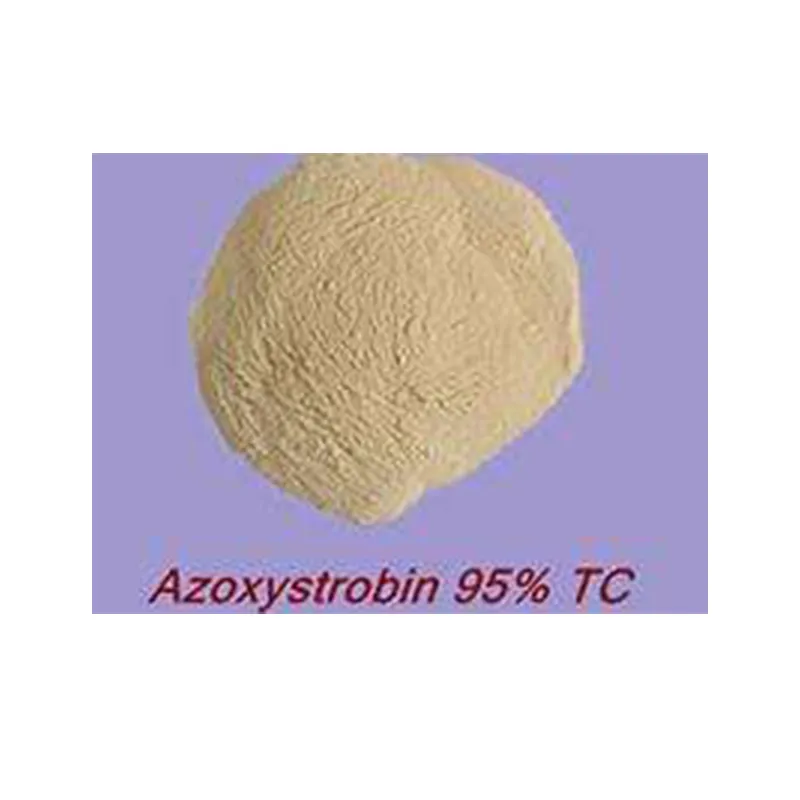
Transparent Delivery Cycle and Robust Warranty:
We understand the time-sensitive nature of agricultural inputs. Our streamlined supply chain and logistics operations are designed to ensure efficient and predictable delivery.
- Typical Delivery Cycle: For standard orders, lead times typically range from 20-45 days from order confirmation, depending on product volume, formulation complexity, and destination. We provide clear communication and tracking updates throughout the shipping process. Expedited options are available for urgent requirements, subject to prior arrangement.
- Quality Warranty: We stand behind the quality of our azoxystrobin fungicide products. Our warranty covers product efficacy and adherence to specifications for a defined period (e.g., 2 years from the date of manufacture when stored under recommended conditions). Any product found to be non-compliant with our published specifications will be promptly addressed, either through replacement or credit, subject to our standard terms and conditions.
Dedicated Customer Support and Technical Expertise:
Our commitment to our partners extends far beyond product delivery. We offer multi-channel customer support to address any inquiries, from technical specifications to logistics and application advice. Our team of experts, comprising chemists, agronomists, and regulatory specialists, is readily available to provide in-depth technical assistance and troubleshooting.
- Technical Hotlines and Online Portals: Access to dedicated lines and secure online platforms for quick response to technical queries.
- Regional Support Teams: Localized support teams provide culturally and agriculturally relevant advice, understanding specific challenges in different markets.
- Training and Educational Resources: We provide comprehensive training materials, webinars, and on-site training sessions for our partners' sales and technical teams, empowering them with deep knowledge of azoxystrobin and its optimal use.
Frequently Asked Questions (FAQ) about Azoxystrobin
- Q1: What is the primary mode of action of azoxystrobin?
- A1: Azoxystrobin is a Quinone outside Inhibitor (QoI) fungicide. It acts by inhibiting mitochondrial respiration in fungal cells, specifically blocking electron transport at the Qo site of the cytochrome bc1 complex. This deprives the fungus of energy (ATP), thus preventing spore germination and mycelial growth.
- Q2: What types of diseases does azoxystrobin fungicide control?
- A2: It offers broad-spectrum control against a wide range of fungal diseases caused by Ascomycetes, Basidiomycetes, Deuteromycetes, and Oomycetes. Common diseases include powdery mildew, downy mildew, rusts, blights (e.g., early and late blight), Septoria leaf spot, and anthracnose, across numerous crops like cereals, fruits, vegetables, and ornamentals.
- Q3: Is azoxystrobin systemic?
- A3: Yes, azoxystrobin exhibits both systemic and translaminar activity. This means it is absorbed by the plant and moves within the plant's vascular system, protecting new growth, and it also penetrates the leaf surface to protect the underside of the leaf, providing comprehensive internal and external protection.
- Q4: How does azoxystrobin contribute to plant health beyond disease control?
- A4: Azoxystrobin is known for its "greening effect" and physiological benefits. It can enhance nitrogen assimilation, improve water use efficiency, and delay senescence (aging) in plants. These effects lead to increased photosynthetic activity, better stress tolerance, and ultimately, improved yield and quality, even in the absence of significant disease pressure.
- Q5: What is azoxystrobin 2sc?
- A5: Azoxystrobin 2sc refers to a Suspension Concentrate (SC) formulation containing approximately 2 pounds of active ingredient (AI) per gallon, or typically 250 g/L. This liquid formulation consists of finely ground azoxystrobin particles suspended in water, designed for easy mixing and superior spray coverage, reducing dust and improving handling safety.
- Q6: What precautions should be taken regarding fungicide resistance with azoxystrobin?
- A6: As a single-site mode of action fungicide, azoxystrobin carries a moderate to high risk of resistance development if not managed properly. To mitigate this, it's crucial to follow fungicide resistance management guidelines, such as rotating azoxy with fungicides from different modes of action (MOAs), using tank-mixes with multi-site fungicides, and adhering to recommended application rates and timings. Consult local extension services or product labels for specific guidance.
- Q7: What are the storage requirements for azoxystrobin products?
- A7: Azoxystrobin products should be stored in their original container111s, in a cool, dry, well-ventilated area, away from direct sunlight, heat, and sources of ignition. Ensure container111s are tightly sealed when not in use. Avoid freezing, especially for SC formulations, as this can affect product stability and performance. Refer to the product label for specific storage temperatures and conditions to maintain optimal shelf-life, typically 2 years or more.
Conclusion: Partnering for Agricultural Excellence with Azoxystrobin
Azoxystrobin has unequivocally established itself as a cornerstone of modern crop protection, offering unparalleled broad-spectrum disease control, physiological plant health benefits, and a favorable environmental profile when used responsibly. Its intricate synthesis, precise formulation—epitomized by products like azoxystrobin 2sc—and versatile application scenarios underscore its critical role in enhancing global agricultural productivity and sustainability. As a leading manufacturer and supplier of azoxystrobin fungicide, we are dedicated to providing products that not only meet but exceed international standards for purity, efficacy, and safety.
Our unwavering commitment to research and development, stringent quality control measures, transparent delivery processes, and comprehensive customer support positions us as a trusted partner for B2B stakeholders in the agrochemical industry. We believe in fostering long-term relationships built on mutual trust, technical expertise, and a shared vision for healthier crops and a more secure food supply. Whether you are seeking high-purity technical grade azoxystrobin, custom formulations, or strategic guidance on disease management, our team is equipped to deliver tailored solutions that drive your business forward. Embrace the power of azoxy and partner with us to cultivate a future of agricultural excellence.
Authoritative References
- Bartlett, D. W., Clough, J. M., Godwin, J. R., Hall, A. A., Hamer, M., & Parr-Dobrzanski, B. (2002). The strobilurin fungicides. Pest Management Science, 58(7), 649-662.
- FRAC (Fungicide Resistance Action Committee). (2023). FRAC Code List© 2023: Fungicides sorted by mode of action.
- Clough, J. M., & Godwin, J. R. (2007). Azoxystrobin: a new agrochemical from the strobilurin group. Journal of Pesticide Science, 32(3), 297-304.
- He, X., Zhang, H., Liu, F., & Wang, Y. (2018). Physiological effects of azoxystrobin on crops: A review. Pesticide Biochemistry and Physiology, 150, 169-176.
- Zhang, M., Li, Y., Wu, M., Han, J., & Zhang, J. (2019). Development of an ultra-high performance liquid chromatography-tandem mass spectrometry method for the simultaneous determination of strobilurin fungicides in agricultural products. Food Chemistry, 271, 61-68.
- FAO (Food and Agriculture Organization of the United Nations). (2010). Pesticide Specifications: Azoxystrobin.
- Gisi, U., & Cohen, Y. (2015). Fungicide Resistance in Plant Pathogens: Principles and Practice. Springer.
- Herms, D. A. (2002). Effects of strobilurin fungicides on plant growth and development: an overview. Pest Management Science, 58(7), 675-680.
- Godwin, J. R. (2005). The role of azoxystrobin in sustainable crop protection. Brighton Crop Protection Conference—Pests & Diseases, 2005, 793-802.
-
Zinc Chloride: Anhydrous, Liquid Forms ExploredNewsAug.25,2025
-
Sodium Chlorate: A multifunctional chemical product with chlorine dioxide preparation as its coreNewsAug.15,2025
-
Potassium Permanganate: An Efficient Oxidant in Laboratories and IndustriesNewsAug.15,2025
-
Imidacloprid Insecticide: A Model of Highly Effective Systemic InsecticidesNewsAug.15,2025
-
Imidacloprid Insecticida: A Highly Effective Insecticide Targeting the Insect Nervous SystemNewsAug.15,2025
-
Dmso Dimethyl Sulfoside: A Multi functional Assistant in Chemical SynthesisNewsAug.15,2025
-
3 5 Dichlorobenzoyl Chloride: a key intermediate in drug synthesisNewsAug.15,2025
